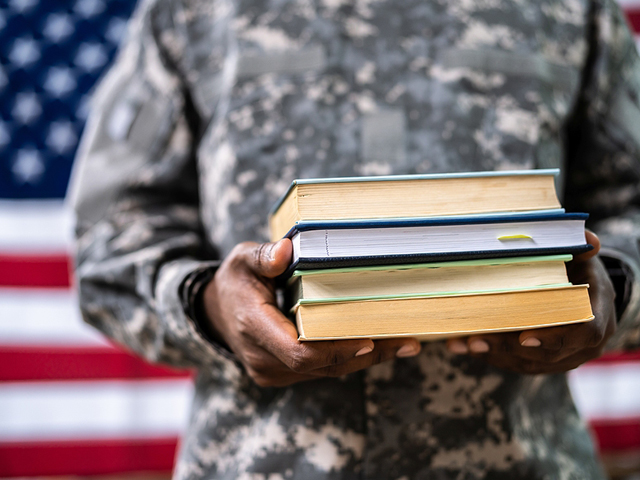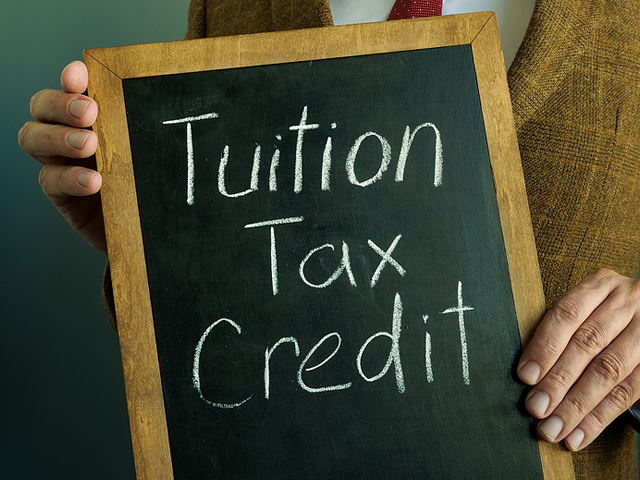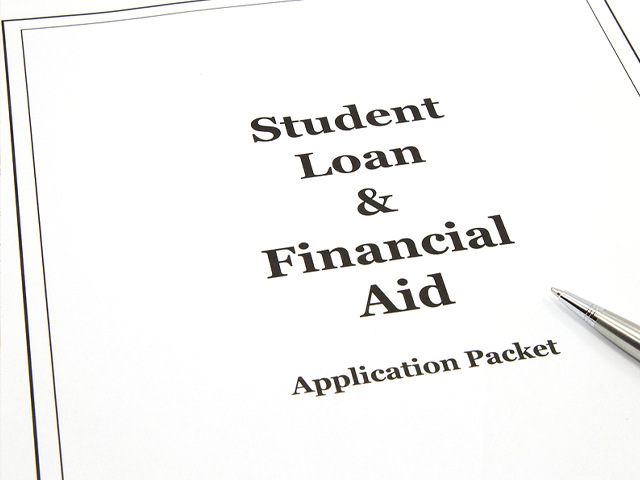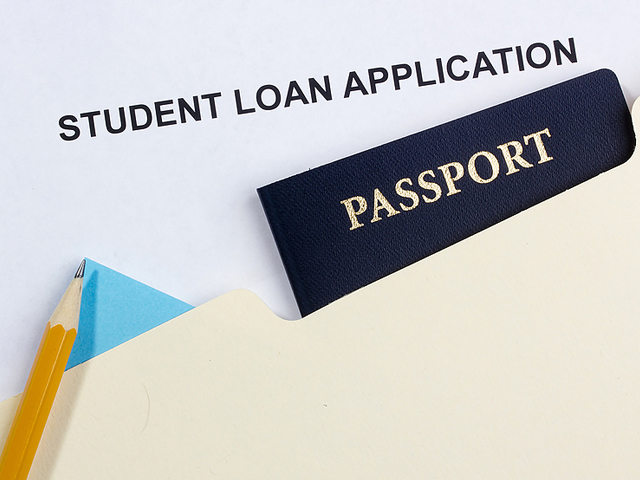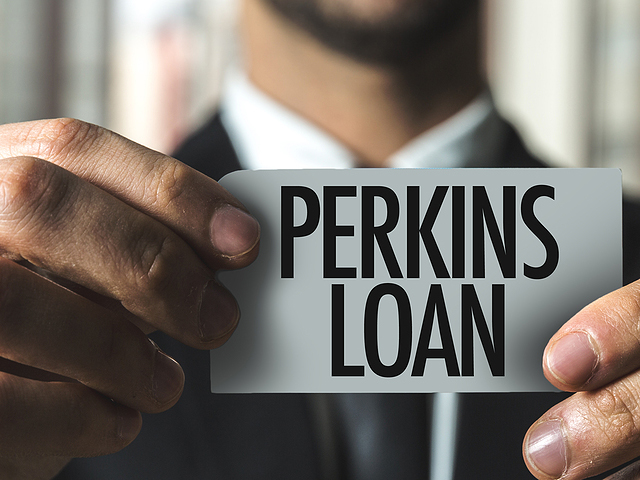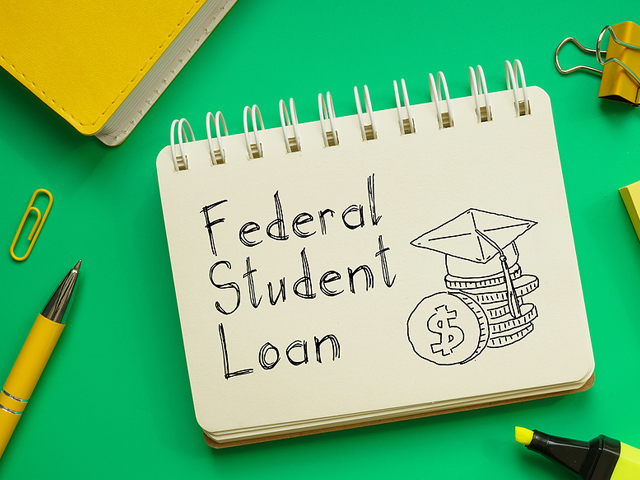
You may be eligible for the Public Service Loan Forgiveness Program aka PSLF if you are employed by a United States local, federal, tribal, or state government or a not-for-profit organization. Find out if you meet the qualifications by reading below.
Once you have made 120 qualifying monthly payments while working for a qualified employer, the PSLF Program can forgive the remaining balance on your Direct Loans.
How To Qualify for PSLF
You must meet the below criteria in order to qualify for public service loan forgiveness:
- Make 120 qualifying payments.
- Work full-time for that organization or agency.
- Be employed by a U.S. federal, state, local, or tribal government or not-for-profit organization.
- Repay your loans under an income-driven repayment plan.
- Have Direct Loans (or consolidate other federal student loans into a Direct Loan);
It is recommended that you submit a Public Service Loan Forgiveness (PSLF) & Temporary Expanded PSLF (TEPSLF) Certification & Application (PSLF Form) each year to ensure you are on track. The information that is provided on the form will be used to determine if you are making PSLF qualifying payments. This will help you find out if you are eligible as fast as possible.
What Defines A Qualifying Employer?
One of the main deciding factors for qualifying employment for this program is about who you work for not the type of job you do. The following organizations below qualify for PSLF:
- Not-for-profit organizations that under Section 501(c)(3) of the Internal Revenue Code are tax-exempt.
- Government organizations at any level including tribal, local, state, or U.S. federal.
- Serving as a Peace Corps volunteer or full-time in AmeriCorps additionally counts as qualifying employment for the PSLF Program.
The next list is about employers who DO NOT qualify for PSLF:
- For-profit government contractors
- For-profit organizations
- Partisan political organizations
- Labor unions
Contractors
Contractors need to be employed directly by a qualifying employer for their employment to count toward public service loan forgiveness. If you work for an organization that is completing work under a contract with an employer who qualifies, your status is determined by your employer’s status as opposed to the organization status that your employer has a contract with. For instance, if you work for a for-profit contractor who is completing work for a qualifying employer, your employment will not count toward public service loan forgiveness.
Additional Kinds of Not-for-Profit Organizations
If you are working for a not-for-profit organization that doesn’t qualify for tax-exempt under Section 501(c)(3) of the Internal Revenue Code, if it offers specific kinds of qualifying public services, it can still fall under the qualifying employer category.
Full-time Employment Definition
Typically, you are considered a full-time employee to be considered for PSLF if you work at least 30 hours per week or meet your employer’s definition of full-time, whichever equals more.
If you are working at more than one part-time qualifying job simultaneously, you will be considered full-time if your combined hourly average equals 30 hours per week with both employers.
If you spent time on worship services, religious instruction, or any type of proselytizing or work for a not-for-profit organization, this may not be counted to meeting the definition of full-time employment requirement.
What Are Eligible Loans?
Any Direct Loan or loan received under the William D. Ford Federal Direct Program will qualify for PSLF.
The following federal student loan programs do not qualify for public service loan forgiveness:
- The Federal Perkins Loan Program
- The FFEL or Federal Family Education Loan
Note that if the above are consolidated into a Direct Consolidation Loan, they may become eligible.
Private lender student loans also don’t qualify for PSLF.
It is important to note that once your loans have been consolidated, the only qualifying payments are the ones you make on your Direct Consolidation Loan. These are the only payments that may be counted toward the 120 required payments for PSLF. This means that all payments made prior to consolidation will not qualify.
How Are Qualifying Payments Calculated?
To be considered a qualifying monthly payment, it needs to be a payment made:
- Under a repayment plan that qualifies
- After October 1, 2007
- While you are full-time employed by an employer who qualifies
- No later than 15 days after your due date
- For the full amount due as stated on your bill
Also, note that qualifying monthly payments count only during times that you are required to make a payment. If your loans are in any of the following statuses below, they will not be considered a qualifying monthly payment:
- in forbearance
- in deferment, or
- during the grace period,
- during in-school status
Contact your federal student loan servicer to discuss waiving the forbearance or deferment if you prefer to make qualifying payments but are currently in forbearance or deferment.
Note that the required 120 monthly qualifying payments do not need to be consecutive. For instance, if you are employed for some time with a non-qualifying employer, you won’t lose credit for any qualifying payments previously submitted.
To simplify the repayment process and ensure that no payments are missed and that they are made on time, sign up for an automatic debit option from your loan service provider. If you are completing online banking payments, consider the 3 to 5 business days it may take for the transaction to post when picking your due date to ensure they don’t register as late payments or accrue additional interest.
Will I qualify faster if I make higher monthly payments?
No, you won’t. The program is based on making 120 separate monthly payments. Therefore, paying larger amounts less often will not help you qualify faster for PSLF.
However, you are allowed to make lump sum payments or prepay up to twelve months in advance. Or, when your upcoming income-driven payment (IDR) plan is due.
For instance, if your IDR was recertified and your monthly payment was $100 but you deposited $1200 for your initial month’s payment, that payment would be considered as 12 separate payments for the year. In this case, you would not be required to make any more payments until the next 12-month cycle is complete. After you certified your eligible employment for the 12-months, these payments would count as qualifying payments toward PSLF forgiveness.
Are my loans being repaid by the U.S. Department of Defense if I am in the Peace Corps or the AmeriCorps?
Borrowers who are volunteers with the Peace Corps or in the AmeriCorps have special rules. They can utilize their Peace Corps transition payment or their Segal Education Award to make a single lump-sum payment that can count for up to 12 PSLF qualifying payments.
Borrowers who have any lump-sum payments on their behalf administered by the U.S. Department of Defense under a student loan repayment program can additionally receive credit for more than one payment that qualifies as a PSLF payment.
What Defines Qualifying Repayment Plans?
All the income-driven repayment (IDR) plans are qualifying repayment plans. This refers to plans that calculate your monthly repayment on your income amount.
Payments made under the ten-year Standard Repayment Plan qualify. However, you will need to change to an IDR plan to obtain PSLF benefits.
Your loans will be paid in full under the ten-year Standard Repayment Plan after you have made the 120 qualifying PSLF payments. There will be no balance to forgive at this time. Before changing to an IDR plan, you need to note that your payment may increase under these changes. This will depend on the amount you owe and your income. If this is the situation and you don’t want to pay more, the PSLF Program may not work to your benefit.
The repayment plans below don’t qualify for PSLF:
- Alternative Repayment Plan
- Extended Repayment Plan
- Graduated Repayment Plan
- Standard Repayment Plan for Direct Consolidation Loans
PSLF Process
It will take a minimum of ten years to qualify for the PSLF since you must make 120 qualifying monthly payments.
You need to work for a qualifying employer at the time you send in the form for forgiveness and at the time the balance left on your loan is forgiven. This is an important detail to note.
Fill out and submit the PSLF & TEPSLF or Temporary Expanded PSLF Certification & Application whether you are working toward PSLF and are completing the certification for the employer or if you have made the 120 payments that qualify.
The information you give on the form will determine if you are making PSLF payments that qualify. This will help you find out if you are on the right path as soon as possible.
Important! It is recommended that you submit your PSLF form periodically. Otherwise, when you apply for loan forgiveness, you will have to send in the employment certification for every employer where you worked during the time you were contributing to the 120 monthly qualifying payments. Avoid this backtracking hassle simply by submitting your PSLF periodically. Set a reminder for yourself if that helps.
Public Service Loan Forgiveness Help Tool
This PSLF Help Tool is helpful and useful. It will explain more details about the TEPSLF and the PSLF and let you know what steps need to be taken if you want to participate in the loan forgiveness process.
It defines if your loans will qualify for PSLF. The information provided about your federal student loans can dictate additional actions you need to take if you wish to receive the TEPSLF or the PSLF. Lastly, it will assess if your employer qualifies for the program.
Once you finish the PSLF Help Tool online, you will need to print the PDF document generated by the tool. Next, you will have to have your employer sign this form and then sign it yourself and send it to the PSLF servicer. The PDF document contains easy-to-follow instructions.
What Is the PSLF Form Process?
Once you send in a PSLF Form, your loans will transfer to the servicer for the PSLF. Once the servicer establishes the number of qualifying payments you submitted during the employment period on your form, you will receive a letter stating the number of payments that you made that qualify. Note that the amount of qualifying payments made will only update each time you submit an additional PSLF form documenting a new stage of qualifying employment.
Check your most recent billing statement to discover where you are at with your account. You can also find out how many qualifying payments you’ve made by logging in to your account with the PSLF servicer and viewing your loan details
Certification of Employment
An official who has access to your service records or your employment can certify your employment if they are authorized by your employer. They can certify your service as a Peace Corps volunteer, an AmeriCorps volunteer, or your employment service. Oftentimes, this may be a person in the Human Resources department. Other times, there may be a direct supervisor or different person authorized to certify your employment. See who can certify your PSLF Form by checking with your organization.
Tax on Forgiveness
Note that funds forgiven with the PSLF Program are not considered income according to the Internal Revenue Service. This means you will not have to pay federal income tax on the forgiven portion of your Direct Loans.
It is essential to have all of your questions and concerns addressed early to ensure you meet the requirements to qualify for these loan forgiveness options.





